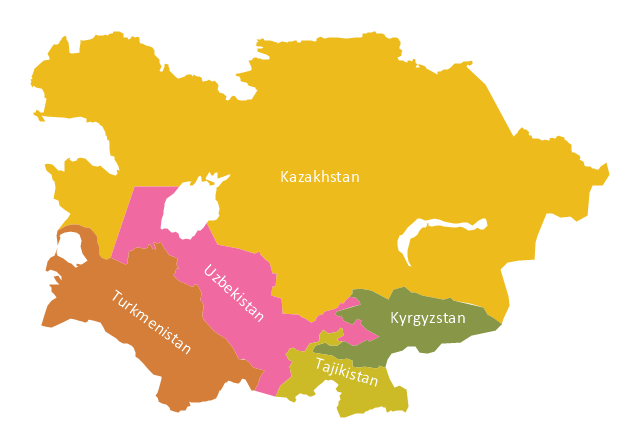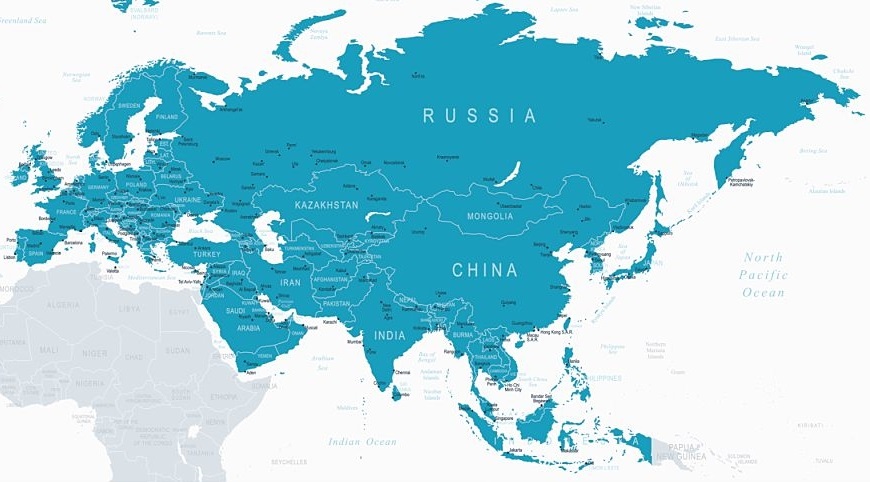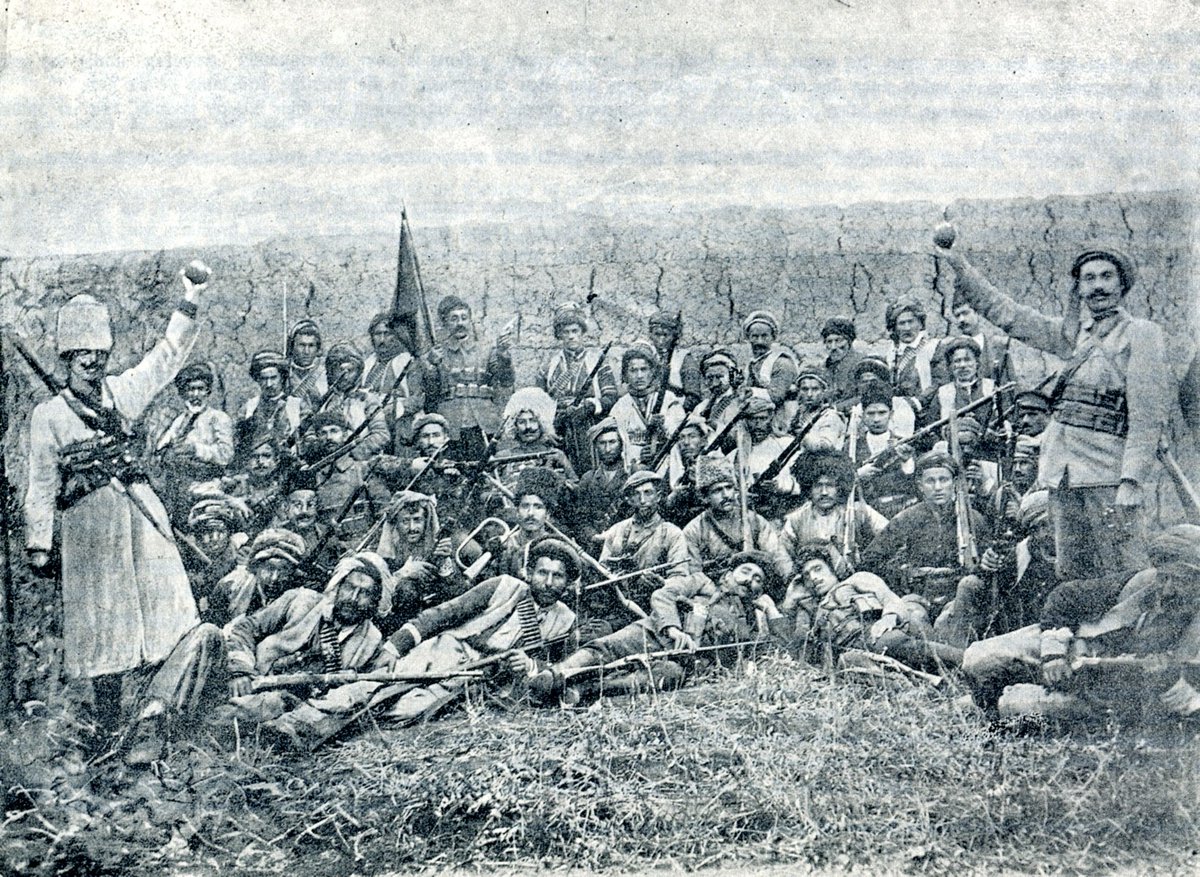
Since their independence from the Union of Soviet Socialist Republics (USSR), over 25 years has passed for the Central Asian countries. Over the years, these countries, both internally and externally, were faced with numerous problems in various degrees. One such problem was regarding the diversification of their economies. Initially, during the Soviet period, each of these countries were part of a large integrated economic structure. After the collapse of this structure, each part of this whole was left on its own and needed to diversify its economy to survive in the globalized economy. This story will be the subject of in another commentary.
These countries, in their 25th anniversary, are faced with another interesting issue: demographics. This issue is different from common or usual issues such as economy or security. Time will tell if this issue will turn into a problem or to a benifit for these relatively newly independent countries. The decisions these countries will take in the field of demographics will determine not only their own future, but also the future of the region.
When one looks at the demographic trend of Central Asian countries, one is faced with a different picture than the rest of the ex-Soviet countries in the world. If one looks to the Caucasus, the population increase has been relatively small. If one looks to the Baltics, the trend has been in fact reverse; the three Baltic countries have witnessed significant population decrease.[1]
Even though the population growth of the Central Asian countries has been reaching monumental levels as a whole over the last 25 years, this has not been the case for all the countries in the region during the entire time in question. For example, initially, Kazakhstan was following a different demographic trend compared to the rest of the Central Asian countries. This was especially the case for the first decade. This was mainly due to emigration of each ethnic group from Kazakhstan to their ancestral country after the breakup of the USSR. The decline in Kazakhstan’s population only began to reverse over the last the last 15 years due to powerful fertility rates.[2]
This overall trend was not the case for other Central Asian countries. Kyrgyzstan, Tajikistan, Turkmenistan, and Uzbekistan -who also went through population resettlement- were not as effected as Kazakhstan. Thus, they experienced much larger population increases than Kazakhstan. For example, the population boom of Uzbekistan and of Turkmenistan over the last 25 years has been almost 50 percent.[3]
In their post-independence, 25th year anniversary, the Central Asian countries are faced with another demographic development. These countries are following the overall Western countries’ trend of increased life expectancy. For example, according to World Bank report titled “Golden Aging: Prospects for Healthy, Active and Prosperous Aging in Europe and Central Asia”, the average life expectancy in the five of the Central Asian countries increased from 64 in 1995 to 68 in 2015. In Kyrgyzstan and Kazakhstan, life expectancy has become over 70.[4]
The demographic shift the Central Asian countries are facing is not limited with the above developments. A more significant occurrence in the demographic shift for Central Asian countries is the change in their multi-ethnic, cosmopolitan nature. The multi-ethnic character of the five Central Asian Central Asian countries, where a significant amount of Russian, Ukrainian, and Belarusian’s were residing,[5] has begun to change especially over the last ten years.
The issue of emigration from Kazakhstan was discussed above. Other Central Asian countries were also similarly affected by these changes. For example, in Kyrgyzstan, the Russian speaking population has decreased from 25 to 7 percent from the Soviet period. In Uzbekistan, this number has decreased to 3 percent. The story of the Russian speaking population in Turkmenistan was more complicated. In the other countries, the process immigration was a more natural process. In Turkmenistan, on the other hand, it involved inter-state politics. After negotiations between the Russian and Turkmen governments, President of Russia Vladimir Putin and President of Turkmenistan Saparmurat Niyazov signed a protocol and terminated the dual citizenship of individuals who resided in Turkmenistan.[6]
The change regarding the ethnic make up of the Central Asian Republics can be seen both as an advantage and a disadvantage.
Individuals from different ethnic groups can contribute in different manners to the economic and cultural development of a country. Individuals from different ethnic backgrounds can increase communication between different countries and create special bilateral ties (such as the one that exists between Turkey and Germany). If the multiethnic makeup of a country is diminishing, so can the potential benefits mentioned here can disappear.
On the downside, there is the potential meddling of foreign powers in the internal politics of these countries. Arguably, foreign powers can use the ethnic groups inside these countries to meddle in the internal politics of these countries and cause political unrest.[7] Although it should be noted that this, in the case of Central Asian countries, has only been a theoretical exercise. So far there has not been any evidence of such a meddling of any global or regional power in the internal politics of these countries.
Lastly, the Central Asian countries must deal with a massive level of urbanization as a demographic phenomenon in the region. Almost all of these countries have implemented what has been called the “concentration model”, in which the population and economic activity have been focused in few large cities. These large cities in turn are coping with the usual problems such entities are facing worldwide.[8]
After a quarter of a century of independence, the Central Asian countries are faced with an interesting phenomenon that presents them with both opportunities and obstacles. On the one hand, they have a booming population. This provides these countries with a young, vibrant population concentrated in medium to large cities with countless economic possibilities. On the other hand, they have an ever-increasing number of senior citizens and a shrinking multi-ethnic population that cause a decrease in the active workforce and may lead to the loss of the cosmopolitan nature of these countries.
*Photo: Conceptdraw.com
[1] Li Ping Luo, “Demographic Divergence”, RFE/RL, http://www.rferl.org/a/27927989.html
[2] Li Ping Luo, “Demographic Divergence”.
[3] Li Ping Luo, “Demographic Divergence”.
[4] Catherine Putz, “Central Asia: Neither Forever Young Nor Getting Much Older”, The Diplomat, http://thediplomat.com/2015/06/central-asia-neither-forever-young-nor-getting-much-older/ ; Li Ping Luo, “Demographic Divergence”.
[5] Victoria Panfilova, “Russian exodus continues from Central Asia”, Russia & India Report, http://in.rbth.com/world/2014/08/25/russian_exodus_continues_from_central_asia_37791
[6] Victoria Panfilova, “Russian exodus continues from Central Asia”.
[7] Joanna Lillis, “To Limit Russian Meddling, Astana Entices Kazakhs from Abroad”, Moscow Times, http://old.themoscowtimes.com/news/article/to-limit-russian-meddling-astana-entices-kazakhs-from-abroad/503772.html
[8] “Urbanization in Central Asia: Challenges, Issues and Prospects”, United Nations Economic and Social Commission for Asia and the Pacific, http://www.unescap.org/sites/default/files/Urbanization%20in%20Central%20Asia_ENG_0.pdf
© 2009-2025 Center for Eurasian Studies (AVİM) All Rights Reserved
No comments yet.
-
 RELIGIOUS ASSIMILATION POLICIES IN GREECE: PRESSURE ON TURKISH MUFTIS AS A CONTINUATION OF MINORITY RIGHTS VIOLATIONS
RELIGIOUS ASSIMILATION POLICIES IN GREECE: PRESSURE ON TURKISH MUFTIS AS A CONTINUATION OF MINORITY RIGHTS VIOLATIONS
Teoman Ertuğrul TULUN 21.08.2025 -
 A GREEK PONTUS TV DRAMA MAKES MOCKERY OF HISTORICAL FACTS
A GREEK PONTUS TV DRAMA MAKES MOCKERY OF HISTORICAL FACTS
Teoman Ertuğrul TULUN 31.08.2020 -
 THE REPUBLIC OF KAZAKHSTAN: INITIATOR OF THE ORGANIZATION OF TURKIC STATES
THE REPUBLIC OF KAZAKHSTAN: INITIATOR OF THE ORGANIZATION OF TURKIC STATES
Teoman Ertuğrul TULUN 06.01.2022 -
 UN FACT-FINDING MISSION REPORT ON MYANMAR CONFIRM THE IMPORTANCE OF GENOCIDE CONVENTION
UN FACT-FINDING MISSION REPORT ON MYANMAR CONFIRM THE IMPORTANCE OF GENOCIDE CONVENTION
Teoman Ertuğrul TULUN 12.09.2018 -
 EU’S NEW CENTRAL ASIA STRATEGY AND NOTION OF CONSTRUCTIVE EURASIANISM
EU’S NEW CENTRAL ASIA STRATEGY AND NOTION OF CONSTRUCTIVE EURASIANISM
Teoman Ertuğrul TULUN 16.07.2019
-
 HOW TO UNDERSTAND THE EU-CHINA AGREEMENT ON INVESTMENT
HOW TO UNDERSTAND THE EU-CHINA AGREEMENT ON INVESTMENT
Şevval Beste GÖKÇELİK 08.02.2021 -
 AVİM ON THE ELEVENTH ANNIVERSARY OF ITS FOUNDING
AVİM ON THE ELEVENTH ANNIVERSARY OF ITS FOUNDING
Teoman Ertuğrul TULUN 05.02.2020 -
 THE TROJAN HORSE IN THE US
THE TROJAN HORSE IN THE US
AVİM 19.11.2019 -
 IRAN-CHINA DIPLOMATIC MEETING IN BEIJING
IRAN-CHINA DIPLOMATIC MEETING IN BEIJING
Farzana HEDAYAT - Fatema MIAKHEL 01.10.2015 -
 A REVIEW OF THE 1915 VAN REVOLT - BEFORE AND AFTER, ARGUMENTS AND DISTORTIONS
A REVIEW OF THE 1915 VAN REVOLT - BEFORE AND AFTER, ARGUMENTS AND DISTORTIONS
Ahmet Can ÖKTEM 06.09.2021
-
25.01.2016
THE ARMENIAN QUESTION - BASIC KNOWLEDGE AND DOCUMENTATION -
12.06.2024
THE TRUTH WILL OUT -
27.03.2023
RADİKAL ERMENİ UNSURLARCA GERÇEKLEŞTİRİLEN MEZALİMLER VE VANDALİZM -
17.03.2023
PATRIOTISM PERVERTED -
23.02.2023
MEN ARE LIKE THAT -
03.02.2023
BAKÜ-TİFLİS-CEYHAN BORU HATTININ YAŞANAN TARİHİ -
16.12.2022
INTERNATIONAL SCHOLARS ON THE EVENTS OF 1915 -
07.12.2022
FAKE PHOTOS AND THE ARMENIAN PROPAGANDA -
07.12.2022
ERMENİ PROPAGANDASI VE SAHTE RESİMLER -
01.01.2022
A Letter From Japan - Strategically Mum: The Silence of the Armenians -
01.01.2022
Japonya'dan Bir Mektup - Stratejik Suskunluk: Ermenilerin Sessizliği -
03.06.2020
Anastas Mikoyan: Confessions of an Armenian Bolshevik -
08.04.2020
Sovyet Sonrası Ukrayna’da Devlet, Toplum ve Siyaset - Değişen Dinamikler, Dönüşen Kimlikler -
12.06.2018
Ermeni Sorunuyla İlgili İngiliz Belgeleri (1912-1923) - British Documents on Armenian Question (1912-1923) -
02.12.2016
Turkish-Russian Academics: A Historical Study on the Caucasus -
01.07.2016
Gürcistan'daki Müslüman Topluluklar: Azınlık Hakları, Kimlik, Siyaset -
10.03.2016
Armenian Diaspora: Diaspora, State and the Imagination of the Republic of Armenia -
24.01.2016
ERMENİ SORUNU - TEMEL BİLGİ VE BELGELER (2. BASKI)
-
AVİM Conference Hall 24.01.2023
CONFERENCE TITLED “HUNGARY’S PERSPECTIVES ON THE TURKIC WORLD"









